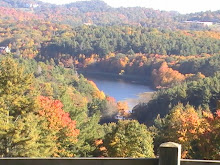Bethany Williams
On June 18, 2005, the Arizona Public Service Company (APS) decommissioned two Childs-Irving Hydrelectric power plants, returning full flows of 46 cfs to fossil creek. This was done with hopes that Fossil Creek would eventually regain it’s natural state.
Fossil Creek restoration was a top priority because of the condition of the Southwest where over 90% of wetland and riparian areas have been lost or severely degraded over the last century.
Research and monitoring prior to and after the return of full flows at Fossil Creek is being conducted by many groups, each having their own specific goals and focuses: U.S. Forest Service, Coconino and Tonto National Forests; Northern Arizona University; Arizona Game and Fish Department; U.S. Fish and Wildlife Service; and U.S. Bureau of Reclamation.
Here are some examples of what the groups are doing:
The Arizona Game and Fish Department is working to restore the native fish species to the river.
The Arizona Wilderness Commission wrote a restoration proposal and got other parties involved and educated them on the subject of Fossil Creek.
The U.S. Forest Service believed that drought conditions would bring harm when pumping tanks, worrying that they may run dry. The U.S. Bureau of Reclamation helped to remedy this situation by renovating 5 tanks in 2005.
The restoration project of Fossil Creek is seen as a success with full waterflow being restored to the creek and the fish population increasing in numbers greater than what it was initially. I think this was a great idea, and it just amazes me that it takes humans 100 years to realize that what they are doing to our ecosystem is negative.
Sources:
http://www.watershed.nau.edu/fossilcreekproject/
http://www.fs.fed.us/r3/coconino/forest-resources/wildlife-fisheries/fossil-creek/restoration-native-fish-fossil.shtml
http://www.americanlands.org/assets/docs/Arizona_NEPA_Success.pdf
Subscribe to:
Post Comments (Atom)








No comments:
Post a Comment